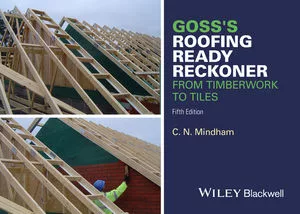ASHRAE Looks to Beef Up Insulation Levels
For the first time in over 18 years, ASHRAE has proposed increases to the minimum required roof and wall insulation levels in Standard 90.1, the national model energy code for commercial buildings. If the increases are adopted, the above-deck roof insulation requirements currently at R-15 would go to R-20 - a 33 percent increase in roof insulation levels.

 Throughout history, building codes have often been developed in response to man-made or natural catastrophes, disasters and crises. Energy codes for buildings were first developed during the energy crisis of the 1970s and placed a great deal of emphasis on the energy efficiency of the building envelope because the technology was considered to be available, practical and economically justified. In 1975, the American Society of Heating, Refrigerating and Air-Conditioning Engineers (ASHRAE) published its first version of a model energy efficiency standard for buildings - Standard 90. Responses to the current climate change and energy crises - from brownouts to blackouts, from $3 per gallon gas to nearly $4, from $40 per barrel oil to over $70 - have also included changes to energy codes and standards.
Throughout history, building codes have often been developed in response to man-made or natural catastrophes, disasters and crises. Energy codes for buildings were first developed during the energy crisis of the 1970s and placed a great deal of emphasis on the energy efficiency of the building envelope because the technology was considered to be available, practical and economically justified. In 1975, the American Society of Heating, Refrigerating and Air-Conditioning Engineers (ASHRAE) published its first version of a model energy efficiency standard for buildings - Standard 90. Responses to the current climate change and energy crises - from brownouts to blackouts, from $3 per gallon gas to nearly $4, from $40 per barrel oil to over $70 - have also included changes to energy codes and standards.
Incredibly, many of the commercial building insulation levels in ANSI/ASHRAE Standard 90.1-2004 contain thermal envelope R-value levels that have not been significantly improved or strengthened since 1989.
Now for the first time in over 18 years, ASHRAE has proposed increases to the minimum required roof and wall insulation levels in Standard 90.1, the national model energy code for commercial buildings. If the increases are adopted, the above-deck roof insulation requirements currently at R-15 would go to R-20 - a 33 percent increase in roof insulation levels. Similar increases are proposed for walls.
Of greatest significance is the Standard 90.1 committee approval of these proposed changes for the next version of the code. This approval sets the stage for ratification by various levels of the ASHRAE Standards development process, culminating in acceptance by the ASHRAE board of directors, which is expected in June of this year. It is anticipated that the ASHRAE Board will adopt these new values because the Board charged the 90.1 committee to deliver a new commercial building energy standard that is 30 percent more efficient than the 2004 version by 2010.
The actual changes are climate zone and building type specific. The ASHRAE standard has various performance compliance mechanisms - from prescriptive requirements to computer simulations and tradeoffs. But regardless of the code compliance approach used, these new insulation values establish a new benchmark for commercial building energy efficiency.
This is ASHRAE’s first step to support the emerging trend to make buildings significantly more efficient. In many ways these new insulation levels are long overdue. Many building owners and architects across the country are already installing insulation at levels that exceed these values. Those architects and building owners seeking beyond-code recognitions (such as LEED, Green Globes, Energy Star, Building America, etc.) will now go even further to deliver advanced building envelopes.
While issues of implementation and timing are yet to be fully resolved, once approved by the ASHRAE board these new values will represent a new national standard against which all codes will be compared. Architects, specifiers and other certifying professionals will have a new standard of care to meet regarding commercial building energy efficiency.
ASHRAE Standard 90.1 addresses building envelope and system requirements for commercial buildings, residential buildings higher than three stories, and semi-conditioned buildings (such as warehouses, etc.). It is the nation’s model standard for establishing the minimum energy performance requirements of these building types.
Roofing contractors who understand the benefits of the proposed changes to the standard can provide needed counsel to customers looking to improve the energy efficiency of their buildings. For those who want to provide added value and performance to their customers’ buildings, the proposal for an enhanced ASHRAE standard is good news.


Figure 1. This chart lists the recommended R-values for the ASHRAE Climate Zones under the proposal to enhance Standard 90.1. (Graphic courtesy of ASHRAE.)
Incredibly, many of the commercial building insulation levels in ANSI/ASHRAE Standard 90.1-2004 contain thermal envelope R-value levels that have not been significantly improved or strengthened since 1989.
Now for the first time in over 18 years, ASHRAE has proposed increases to the minimum required roof and wall insulation levels in Standard 90.1, the national model energy code for commercial buildings. If the increases are adopted, the above-deck roof insulation requirements currently at R-15 would go to R-20 - a 33 percent increase in roof insulation levels. Similar increases are proposed for walls.
Of greatest significance is the Standard 90.1 committee approval of these proposed changes for the next version of the code. This approval sets the stage for ratification by various levels of the ASHRAE Standards development process, culminating in acceptance by the ASHRAE board of directors, which is expected in June of this year. It is anticipated that the ASHRAE Board will adopt these new values because the Board charged the 90.1 committee to deliver a new commercial building energy standard that is 30 percent more efficient than the 2004 version by 2010.
The actual changes are climate zone and building type specific. The ASHRAE standard has various performance compliance mechanisms - from prescriptive requirements to computer simulations and tradeoffs. But regardless of the code compliance approach used, these new insulation values establish a new benchmark for commercial building energy efficiency.
The Benefits of Insulation
In all climate zones, insulation can dramatically help to reduce cooling loads and lower energy costs. This is predicated on existing ASHRAE requirements and independent analysis that concludes that additional roof insulation is cost effective, saves energy, and reduces pollution and carbon emissions.This is ASHRAE’s first step to support the emerging trend to make buildings significantly more efficient. In many ways these new insulation levels are long overdue. Many building owners and architects across the country are already installing insulation at levels that exceed these values. Those architects and building owners seeking beyond-code recognitions (such as LEED, Green Globes, Energy Star, Building America, etc.) will now go even further to deliver advanced building envelopes.
While issues of implementation and timing are yet to be fully resolved, once approved by the ASHRAE board these new values will represent a new national standard against which all codes will be compared. Architects, specifiers and other certifying professionals will have a new standard of care to meet regarding commercial building energy efficiency.
ASHRAE Standard 90.1 addresses building envelope and system requirements for commercial buildings, residential buildings higher than three stories, and semi-conditioned buildings (such as warehouses, etc.). It is the nation’s model standard for establishing the minimum energy performance requirements of these building types.
Roofing contractors who understand the benefits of the proposed changes to the standard can provide needed counsel to customers looking to improve the energy efficiency of their buildings. For those who want to provide added value and performance to their customers’ buildings, the proposal for an enhanced ASHRAE standard is good news.
Looking for a reprint of this article?
From high-res PDFs to custom plaques, order your copy today!





